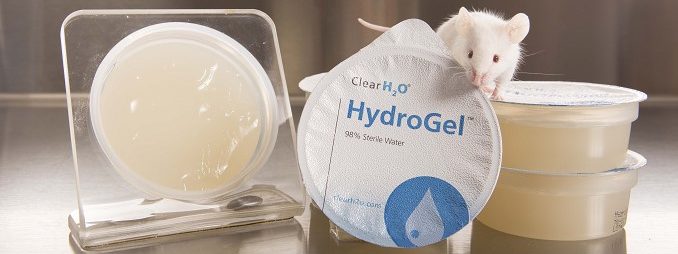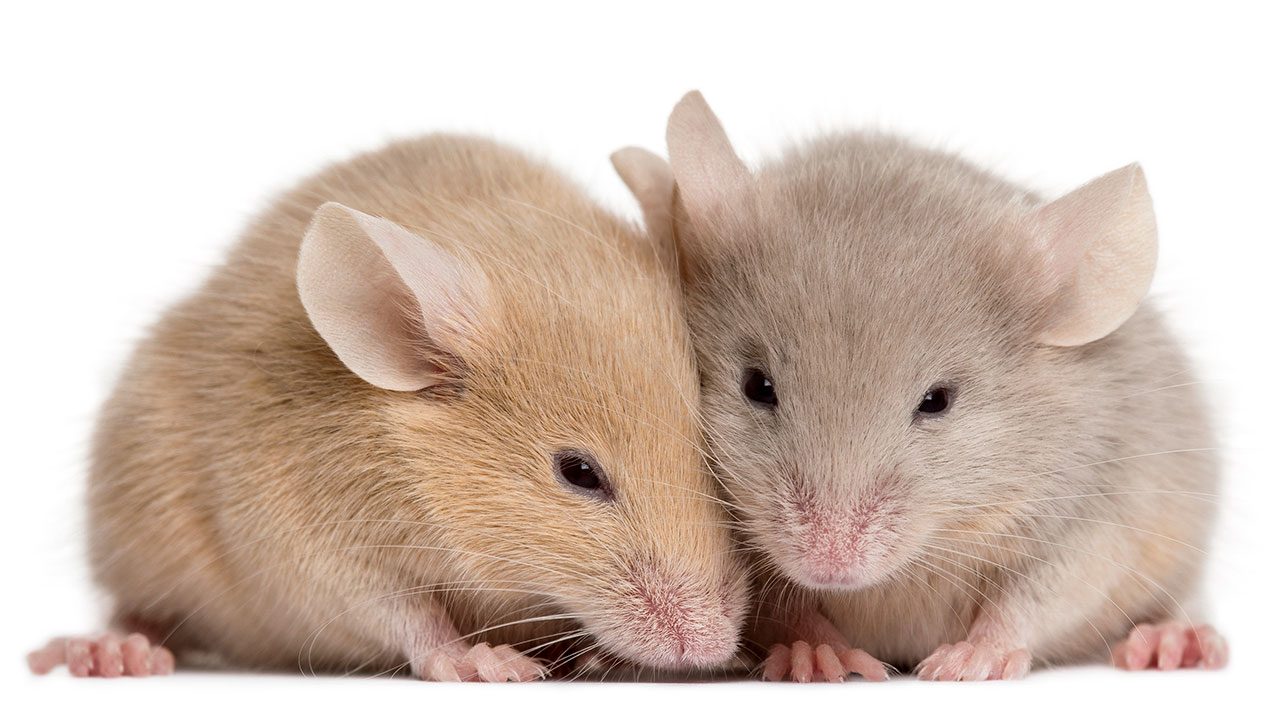When writing a scientific article for publication in a peer-reviewed journal, an entire section, called “Materials and Methods”, is dedicated to providing specific procedural details that, if replicated, should reproduce the same data. Inherent in research are many variables that can influence the biology and behavior of the animals being studied and, therefore, can impact the results. It is important to describe precisely the specific animals used in the experiments and provide the critical parameters for all animal studies: sex, age, strain, origin, genotype... (1). Additionally, external or environmental variables within the vivarium are of primary importance and can influence research outcomes. These include health status, bedding, enrichment, housing, cage changing procedures, handling, lightning, temperature, air, noises…etc… Beyond affecting experimental results, these variables can also impact breeding performance (for more details, see our Breeding Guide).
The list of variables to identify and keep track of is extensive and evergrowing, and scientists have to manage, navigate and make choices at every step. A general rule is that good welfare equals good science: identify the source of potential stress for the animals, put in place some directions and modifications in their care to improve their health and welfare, and good science will follow. Many variables are silent and can quietly influence the data in the background, going unnoticed until a change in the phenotype or behavior of the mice arises (2). In particular, stress has a myriad of effects on multiple physiological functions of the mouse, and can influence data in multiple ways.
Let’s look at three important stress variables to consider.
Mice, like rats and humans, are social species, meaning that they interact highly with other mice and are inclined to group together and follow a particular set of behavioral rules and interactions. Mice show social behaviors such as grooming, mating, nesting, olfactory/tactile/visual investigation of other mice, postures to communicate intent, anxiety, dominance, excitement, etc. When working in a laboratory, group housing is more frequent and recommended, but in some situations, animals have to be singly housed. Individual housing constitutes a stressful situation for the mice, and multiple studies have shown that stress, through the hypothalamus-pituitary-adrenal (HPA) axis, can affect the immune system.
Stress due to social isolation can alter the progression of disease and the response to treatments:
These social conditions need to be taken into account for data interpretation, in particular, for preclinical studies, as this would affect the translatability to humans.
Most animal rooms are now equipped with individually ventilated cages (IVC), connected to a constant air flow. The advantages of this caging type (6) are many: it allows for fresh, cleaner air, it reduces intra-cage ammonia, CO2, heat and humidity, thus keeping the cage drier longer, and decreases the frequency of required cage changes. It also minimizes allergen exposures for the technicians, which constitute a serious health risk in laboratory animal facilities, thus providing health and welfare benefits for both the animals and the animal care staff.
However, mice have high metabolic rates and prefer warmer temperatures (30°C), their thermoneutral zone. Higher air flow can result in cold stress to the mice, who need to eat more calories to stay warm. Adding a cup of gel supplement such as DietGel® 76A or DietGel® Prenatal can bring the extra calories needed for thermoregulation and great breeding performance. Supplying laboratory mice with nesting material may provide sufficient insulation to reduce heat loss and improve both feed conversion and breeding performance (7). Balbc and CD1 strains are good nest builders, while C57BL/6 might require more nesting material (8).

Certain phenotypes observed under conditions of thermal stress disappear when mice are housed at thermoneutrality, whereas others emerge (9). For example, standard subthermoneutral laboratory housing temperature (~22°C) causes chronic, metabolic cold stress and reduces immune function, inducing suppression of the antitumor immune response and promoting tumor growth and metastasis (10). On the flip side, mice housed at cool standard temperatures (∼ 22°C) are more resistant to developing Graft vs Host disease, a major complication of transplantation, than are mice housed at thermoneutral temperatures (∼ 30°C). In an ApoE -/- mouse models of artherosclerosis, mice maintained at cool temperatures eat more without gaining weight, and show smaller aortic plaque size compared to mice housed at thermoneutrality (11).
Cold stress, while unappreciated for a long time, is a variable that is playing an important role in the collection of data, interpretation of results, and needs to be taken into account for the development of drug therapies and translatability to humans. If your inflammation models are not behaving like expected, look into nesting material and shelters!
Providing pain medications to animals in an experimental setting constitutes a variable that needs to be accounted for and researchers must weigh the possible confounding effects of including additional drugs such as analgesics in their treatment. A common justification for withholding analgesics is a concern regarding the potential of these compounds to alter experimental results (12). However, unalleviated pain has the potential to skew scientific results and increase the variability of data, thereby hampering the reproducibility of experiments substantially (13).
As mentioned earlier, pain decreases the immune system function through the HPA axis. Notably, pain decreases the Natural Killer (NK) cell activity in tumor models (14), leading to the tumor growing faster and larger and a 5 fold decrease in survival. Analgesia on the other hand can decrease the impact of pain on tumor growth and metastasis. Pain also has an important impact in local and general mechanisms:
As the magnitude of the pain increases, so does the magnitude of the variability in results. Post-surgical pain is actually a greater variable than analgesics such as meloxicam and/or buprenorphine (15). The goal in drug development is to work most closely nhwith the model that best represents human conditions. A key component of refining studies involving laboratory animals is the implementation of humane endpoints, a set of predetermined clear and physiological or behavioral criteria at which either the study or the uanimal has to be terminated. In many animal experiments, scientists and local authorities define a body-weight reduction of 20% or more as severe suffering and, thereby, as a potential parameter for humane endpoint decisions (16). Analgesia can prevent body weight loss, supporting the animals to reach the end of the study.
There are different ways to provide analgesics to lab animals and studies have shown that oral delivery of NSAIDs and other analgesics is an efficient method and better alternative to injections. To learn more, read our studies: Carprofen/Meloxicam in MediGel® Sucralose and Buprenorphine in MediGel® Hazelnut, and stay tuned for our next AALAS ACE Vendor Webinar, Oral Medication Delivery Alternatives on June 25th!
Overall, researchers need to balance the variables in their experiments, whether to provide or to withhold the refinement to their models and to assess whether the refinement may actually enhance the values of the data.
Inspired by AALAS webinar of May 12th, 2020 “Stress and Pain in Research Reproducibility: Considering What Matters in the Vivarium” – Jennie Lofgren, DVM, MS, DACLAM. See the webinar recording at this link: https://register.gotowebinar.com/recording/8935255317306055937
1 https://www.ncbi.nlm.nih.gov/books/NBK84212/
2 https://www.ncbi.nlm.nih.gov/pubmed/28328885
3 https://www.eneuro.org/content/6/4/ENEURO.0179-18.2019
4 https://pubmed.ncbi.nlm.nih.gov/9067282/
5 https://pubmed.ncbi.nlm.nih.gov/20149809/
6 https://www.ncbi.nlm.nih.gov/pmc/articles/PMC4113234/
7 https://journals.plos.org/plosone/article?id=10.1371/journal.pone.0074153
8 https://journals.plos.org/plosone/article?id=10.1371/journal.pone.0032799
9 https://pubmed.ncbi.nlm.nih.gov/28497813/
10 https://www.pnas.org/content/110/50/20176
11 https://pubmed.ncbi.nlm.nih.gov/27818938/
12 To Treat or Not to Treat: The Effects of Pain on Experimental Parameters, Peterson et al., 2017
13 Side effects of pain and analgesia in animal experimentation, Jirkof 2017
14 Evidence that postoperative pain is a mediator of the tumor-promoting effects of surgery in rats, Page et al., 2001
15 Analgesics promote welfare and sustain tumour growth in orthotopic 4T1 and B16 mouse cancer models, Lofgren et al., 2018
16 Defining Body-Weight Reduction as a Humane Endpoint: A Critical Appraisal. Talbot et al., 2020
The list of variables to identify and keep track of is extensive and evergrowing, and scientists have to manage, navigate and make choices at every step. A general rule is that good welfare equals good science: identify the source of potential stress for the animals, put in place some directions and modifications in their care to improve their health and welfare, and good science will follow. Many variables are silent and can quietly influence the data in the background, going unnoticed until a change in the phenotype or behavior of the mice arises (2). In particular, stress has a myriad of effects on multiple physiological functions of the mouse, and can influence data in multiple ways.
Let’s look at three important stress variables to consider.
Single versus Social Housing
Mice, like rats and humans, are social species, meaning that they interact highly with other mice and are inclined to group together and follow a particular set of behavioral rules and interactions. Mice show social behaviors such as grooming, mating, nesting, olfactory/tactile/visual investigation of other mice, postures to communicate intent, anxiety, dominance, excitement, etc. When working in a laboratory, group housing is more frequent and recommended, but in some situations, animals have to be singly housed. Individual housing constitutes a stressful situation for the mice, and multiple studies have shown that stress, through the hypothalamus-pituitary-adrenal (HPA) axis, can affect the immune system.
Stress due to social isolation can alter the progression of disease and the response to treatments:
- For example, social isolation produces decreased cognitive performance and higher epilepsy seizure frequency as compared to animals maintaining social contact (3).
- Isolation can also significantly influence chemotherapeutic efficacy, decreasing both survival and survival time in mice with mammary tumors (4).
- After surgery, socially enriched mice self-administered less of the analgesic containing water than the non-enriched and socially deprived groups, showing that the housing conditions also have a direct impact on the pain experience (5).
These social conditions need to be taken into account for data interpretation, in particular, for preclinical studies, as this would affect the translatability to humans.
Cold Stress and Thermoregulation
Most animal rooms are now equipped with individually ventilated cages (IVC), connected to a constant air flow. The advantages of this caging type (6) are many: it allows for fresh, cleaner air, it reduces intra-cage ammonia, CO2, heat and humidity, thus keeping the cage drier longer, and decreases the frequency of required cage changes. It also minimizes allergen exposures for the technicians, which constitute a serious health risk in laboratory animal facilities, thus providing health and welfare benefits for both the animals and the animal care staff.
However, mice have high metabolic rates and prefer warmer temperatures (30°C), their thermoneutral zone. Higher air flow can result in cold stress to the mice, who need to eat more calories to stay warm. Adding a cup of gel supplement such as DietGel® 76A or DietGel® Prenatal can bring the extra calories needed for thermoregulation and great breeding performance. Supplying laboratory mice with nesting material may provide sufficient insulation to reduce heat loss and improve both feed conversion and breeding performance (7). Balbc and CD1 strains are good nest builders, while C57BL/6 might require more nesting material (8).

Certain phenotypes observed under conditions of thermal stress disappear when mice are housed at thermoneutrality, whereas others emerge (9). For example, standard subthermoneutral laboratory housing temperature (~22°C) causes chronic, metabolic cold stress and reduces immune function, inducing suppression of the antitumor immune response and promoting tumor growth and metastasis (10). On the flip side, mice housed at cool standard temperatures (∼ 22°C) are more resistant to developing Graft vs Host disease, a major complication of transplantation, than are mice housed at thermoneutral temperatures (∼ 30°C). In an ApoE -/- mouse models of artherosclerosis, mice maintained at cool temperatures eat more without gaining weight, and show smaller aortic plaque size compared to mice housed at thermoneutrality (11).
Cold stress, while unappreciated for a long time, is a variable that is playing an important role in the collection of data, interpretation of results, and needs to be taken into account for the development of drug therapies and translatability to humans. If your inflammation models are not behaving like expected, look into nesting material and shelters!
Pain versus Analgesics in Experimental Variability
Providing pain medications to animals in an experimental setting constitutes a variable that needs to be accounted for and researchers must weigh the possible confounding effects of including additional drugs such as analgesics in their treatment. A common justification for withholding analgesics is a concern regarding the potential of these compounds to alter experimental results (12). However, unalleviated pain has the potential to skew scientific results and increase the variability of data, thereby hampering the reproducibility of experiments substantially (13).
As mentioned earlier, pain decreases the immune system function through the HPA axis. Notably, pain decreases the Natural Killer (NK) cell activity in tumor models (14), leading to the tumor growing faster and larger and a 5 fold decrease in survival. Analgesia on the other hand can decrease the impact of pain on tumor growth and metastasis. Pain also has an important impact in local and general mechanisms:
- impedes healing (see our blog on peri-operative procedures)
- results in cardiovascular effects, such as changes in heart rate and heart rate variability
- affects the secretion of many hormones, neurotransmitters and enzymes
- disrupts sleep
- alters behavior
As the magnitude of the pain increases, so does the magnitude of the variability in results. Post-surgical pain is actually a greater variable than analgesics such as meloxicam and/or buprenorphine (15). The goal in drug development is to work most closely nhwith the model that best represents human conditions. A key component of refining studies involving laboratory animals is the implementation of humane endpoints, a set of predetermined clear and physiological or behavioral criteria at which either the study or the uanimal has to be terminated. In many animal experiments, scientists and local authorities define a body-weight reduction of 20% or more as severe suffering and, thereby, as a potential parameter for humane endpoint decisions (16). Analgesia can prevent body weight loss, supporting the animals to reach the end of the study.
There are different ways to provide analgesics to lab animals and studies have shown that oral delivery of NSAIDs and other analgesics is an efficient method and better alternative to injections. To learn more, read our studies: Carprofen/Meloxicam in MediGel® Sucralose and Buprenorphine in MediGel® Hazelnut, and stay tuned for our next AALAS ACE Vendor Webinar, Oral Medication Delivery Alternatives on June 25th!
Overall, researchers need to balance the variables in their experiments, whether to provide or to withhold the refinement to their models and to assess whether the refinement may actually enhance the values of the data.
Inspired by AALAS webinar of May 12th, 2020 “Stress and Pain in Research Reproducibility: Considering What Matters in the Vivarium” – Jennie Lofgren, DVM, MS, DACLAM. See the webinar recording at this link: https://register.gotowebinar.com/recording/8935255317306055937
See our complete series of AALAS webinars inspired blogs:
01/29/2020: How to Manage Barbering Behavior in Breeding Colonies
03/04/2020: Proper Perioperative Procedures in Rodents Promote Faster Recovery
03/30/2020: The Importance of Gut Microbiota in Reproducibility and Translatability in Research
06/01/2020: Pain is a Variable that Affects Data Reproducibility
07/14/2020: Understanding the Grimace Scale as a Pain Assessment for Laboratory Animals
01/29/2020: How to Manage Barbering Behavior in Breeding Colonies
03/04/2020: Proper Perioperative Procedures in Rodents Promote Faster Recovery
03/30/2020: The Importance of Gut Microbiota in Reproducibility and Translatability in Research
06/01/2020: Pain is a Variable that Affects Data Reproducibility
07/14/2020: Understanding the Grimace Scale as a Pain Assessment for Laboratory Animals
References:
1 https://www.ncbi.nlm.nih.gov/books/NBK84212/
2 https://www.ncbi.nlm.nih.gov/pubmed/28328885
3 https://www.eneuro.org/content/6/4/ENEURO.0179-18.2019
4 https://pubmed.ncbi.nlm.nih.gov/9067282/
5 https://pubmed.ncbi.nlm.nih.gov/20149809/
6 https://www.ncbi.nlm.nih.gov/pmc/articles/PMC4113234/
7 https://journals.plos.org/plosone/article?id=10.1371/journal.pone.0074153
8 https://journals.plos.org/plosone/article?id=10.1371/journal.pone.0032799
9 https://pubmed.ncbi.nlm.nih.gov/28497813/
10 https://www.pnas.org/content/110/50/20176
11 https://pubmed.ncbi.nlm.nih.gov/27818938/
12 To Treat or Not to Treat: The Effects of Pain on Experimental Parameters, Peterson et al., 2017
13 Side effects of pain and analgesia in animal experimentation, Jirkof 2017
14 Evidence that postoperative pain is a mediator of the tumor-promoting effects of surgery in rats, Page et al., 2001
15 Analgesics promote welfare and sustain tumour growth in orthotopic 4T1 and B16 mouse cancer models, Lofgren et al., 2018
16 Defining Body-Weight Reduction as a Humane Endpoint: A Critical Appraisal. Talbot et al., 2020




Leave a comment
All comments are moderated before being published.
This site is protected by hCaptcha and the hCaptcha Privacy Policy and Terms of Service apply.